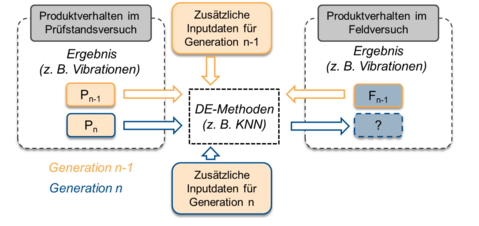FORCuDE@BEV
BAVARIAN RESEARCH ASSOCIATION FOR CUSTOMIZED DIGITAL ENGINEERING FOR BAVARIAN SMES USING THE EXAMPLE OF THE DRIVE TRAIN OF BATTERY ELECTRIC VEHICLES
SP2 Data-driven linking of test bench and field trials
Test bench trials are often used to verify a newly developed product. The behavior of the product on the test bench sometimes differs greatly from the behavior in later field tests, in which the real operating conditions are present. For example, the acoustic emissions of a vehicle transmission can change significantly even with small deviations. Therefore, the aim of the subproject is to develop a digital engineering methodology that is as universally valid as possible and that enables the combination of test bench and field tests and the simulations accompanying the tests. For this purpose, the subproject is concerned with the efficient comparison of test bench and field tests and the deviation analysis of the results obtained.
Two aspects are in focus. On the one hand, it is necessary to identify previously unknown cause-effect relationships from the results of test bench and field trials, especially with regard to deviating product behaviour. This can lead to an improved test bench-side test design, to a better traceability of the cause-and-effect relationships and to the optimization of the product quality of future generations. The second aspect relates to the earlier consideration of findings from the field tests in the development process of a currently developed product generation. Here, data on previous generations "n-1" is used in order to draw conclusions about the possible product behaviour of the current generation "n" in the field by using special data mining methods and data-driven tools without having carried out real field tests so far. Digital engineering (DE) methods such as artificial neural networks can be used for this purpose. This means shorter development times, since information about deviating behavior is available earlier.
The work program for the consideration of both aspects is structured in such a way that in the first part (WP 1-3) an analysis and acquisition of the existing data-driven methods as well as necessary input and output data is carried out. In work packages 3-6 the conception, implementation and evaluation of the developed digital engineering methodology will be carried out. The adaptation (customization) to an industrial application takes place.




